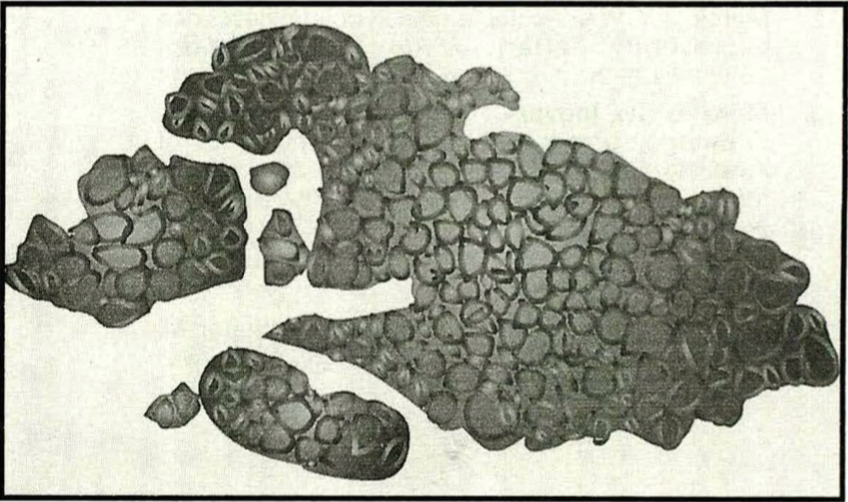Terminología básica en dermatoscopia
Palabras clave:
Terminología, Dermatoscopia, Estructuras anatómicasResumen
El dermatoscopio es un instrumento de ayuda diagnóstica en dermatología, de bajo costo, fácil aplicación, no invasivo y valioso porque ayuda a aumentar el acierto diagnóstico, diferenciar lesiones pigmentadas melanocíticas de no melanocíticas, lesiones pigmentadas benignas de malignas, diagnóstico temprano de melanoma maligno, puede evitar biopsias sin pretender reemplazar estas en personas de alto riesgo o en sitios donde no se disponga de laboratorio dermatopatológico; también facilita direccionar la toma de biopsias en lesiones extensas o confusas clínicamente. Se requiere desde luego de un entrenamiento adecuado y de convertir este instrumento en recurso habitual lo cual aumentará la experiencia personal y por ende los aciertos diagnósticos.
Biografía del autor/a
César lván Varela Hernández, Universidad del Valle
Profesor Ad-Honorem Servicio de Dermatología. Facultad de Salud, Universidad del Valle, Cali.
Danielle Alencar Ponte de Varela, Hospital Universitario del Valle "Evaristo García"
Dermatóloga. Servicio Médico Universidad del Valle. Hospital Universitario del Valle "Evaristo García", Cali.
Referencias bibliográficas
Kenet RO, Kang S, Kenet BJ, Fitzpatrick TB, Sober AJ, Barnhill RL. Clinical diagnosis of pigmented lesions using digital epiluminescence microscopy. Grading protocol and atlas. Arch Dermatol 1993; 729:157-74.
https://doi.org/10.1001/archderm.1993.01680230041005
Menzies SW, Ignvra C, McCarthy WH. A sensitivity and specificity analysis of the surface microscopy features of invasive melanoma. Melanoma Res 1996;6:55-62.
https://doi.org/10.1097/00008390-199602000-00008
Wolff K, Binder M, Pehamberger H. Adv Dermatol 1994;9:45-57.
Kenet RO. Trends in dermatology: diferential diagnosis of pigmented lesions using epiluminescence microscopy. In: Sober AJ, Fitzpatrick TB eds. The Year Book of Dermatology. St Louis: Mosby, 1992.
Nachbar F, Stolz W, Merkle T et al. The ABCD rule of dermatoscopy: high prospective value in the diagnosis of doubtful melanocytic skin lesion. J Am Acad Dermatol 1994;30:551 -59.
https://doi.org/10.1016/S0190-9622(94)70061-3
Steiner A, Pehamberger H, Wolft K. In vivo epiluminescence microscopy of pigmented skin lesion. II. Diagnosis of small pigmented skin lesion and early detection of malignant melanoma. J Am Acad Dermatol 1987; 17:584-91.
https://doi.org/10.1016/S0190-9622(87)70240-0
Curley RK, Cook MG, Fallowfield ME, Marsden
MacKie RM. An aid to the preoperative assesment of pigmented lesions of the skin. Br J Dermatol 1971;85:232-38.
https://doi.org/10.1111/j.1365-2133.1971.tb07221.x
Resende Moreira R, Frieman H. Dermatoscopia: conceitos básicos e impotáncia no diagnóstico de lesóes pigmentadas. An Bras Dermatol 1996; 77:51 -7.
Binder M, Schwarz M, Winkler A, Steiner A, Keider A, Wolff K, Pehamberger H. Epiluminescence microscopy. A useful toll for the diagnosis of pigmented skin lesions for formally trained dermatologists. Arch Dermatol 1995;737:286-91.
https://doi.org/10.1001/archderm.1995.01690150050011
Stolz W. Is the use of oil in epiluminescence microscopy necessary? Hautarzt 1993; 44:742-43.
Melski JW. Water-soluble gels in epiluminescence microscopy (letter). J Am Acad Dermatol 1993;29:129-30.
https://doi.org/10.1016/S0190-9622(08)81824-5
Menzies SW, Ingvar C, Crotty KA, MaCarthy WH.
Gilje O, O'Leary PA, Baldes EJ (1958) Capillary microscopic examination in skin disease. Arch Dermatol 68:136-45.
https://doi.org/10.1001/archderm.1953.01540080020003
Stolz W, Braun-Falco O, Bilek P, Landthaler M, Cognetta A. Color Atlas of Dermatoscopy. Blackwell Science Ltd, 1994.
Stolz W, Bilek P, Landthaler M, Merkle T, Braun-Falco O. Skin surface microscopy. Lancet 1989;//:864-65.
https://doi.org/10.1016/S0140-6736(89)93027-4
Figueiredo Kopke LF. Dermatoscopia das lesóes rmelanociticas. An Bras Dermatol 1996;77:63-7
Puppin D, Salomon D, Saurat Jh. Amplified surface microscopy: preliminary evaluation of a 400-fold magnification in the surface microscopy of cutaneous melanocitic lesions. J Am Acad Dermatol 1993;28:923-27.
https://doi.org/10.1016/0190-9622(93)70131-C
Sober AJ, Burstein JM. Computerized digital image analysis: an aid for melanoma diagnosis-preliminary investigations and brief review. J Dermatol 1994;27:885-90.
https://doi.org/10.1111/j.1346-8138.1994.tb03307.x
Brahmer FA, Fritsch P, Kreusch J et al. Terminology in surface microscopy. J Am Acad Dermatol 1990;23:1159-62.
https://doi.org/10.1016/S0190-9622(08)80916-4
Steiner A, Binder M, Schemper M, Wolf K, Pehamberger H. Statistical evaluation of epiluminescence microscopy criteria for melanocytic pigmented skin lesions. J Am Acad Dematol 1993;29:581-88.
https://doi.org/10.1016/0190-9622(93)70225-I
Yadav S, Vossaert KA, Kopf AW, Silverman M, Grin-Jorgensen C, Ronald O. Histopathologic correlates of structures seen on dermoscopy (epiluminescence microscopy). Am J Dermatopathol 1993;15:297-305.
https://doi.org/10.1097/00000372-199308000-00001
Stanganelli I, Rafanelli S, Bucchi L. Seasonal prevalence of digital epiluminescence microscopy patterns in acquired melanocytic nevi. J Am Acad Dermatol 1996;34:460-64.
https://doi.org/10.1016/S0190-9622(96)90440-5
Saida T, Oguchi S, Ishihara Y. In vivo observation of magnified features of pigmented lesions on volar skin using video macroscope. Usefulness os epiluminescence techniques in clinical diagnosis. Arch Dermatol 1995; 737:298-304.
https://doi.org/10.1001/archderm.1995.01690150062013
Dummer W, Blahet HJ, Bastían BC, SchenK T, Brocker EV, Remy W. Preoperative characterization of pigmented skin lesions by epiluminescence microscopy and high-frequency ultrasound. Arch Dermatol 1995;737:279-85.
https://doi.org/10.1001/archderm.1995.01690150043010
Pehamberger H, Steiner A, Wolff K. In vivo epiluminescence microscopy of pigmented skin lesion. I. Pattern analysis of pigmented skin lesions. J Am Acad Dermatol 1987; 7 7:571 -83.
https://doi.org/10.1016/S0190-9622(87)70239-4
Menzies SW, Crotty KA, MaCarthy WH. The morphologic criteria of the pseudopod in surface microscopy. Arch Dermatol 1995; 737:436-40.
https://doi.org/10.1001/archderm.1995.01690160064010
Kenet RO, Kang S, Kenet BJ, Fitzpatrick TB, Sober AJ, Barnhill RL. Clinical diagnosis of pigmented lesions using digital epiluminescence microcopy-grading protocol and atlas. Arch Dermatol 1993;729:157-74.
Cómo citar
Descargas

Descargas
Publicado
Cómo citar
Número
Sección
| Estadísticas de artículo | |
|---|---|
| Vistas de resúmenes | |
| Vistas de PDF | |
| Descargas de PDF | |
| Vistas de HTML | |
| Otras vistas | |






